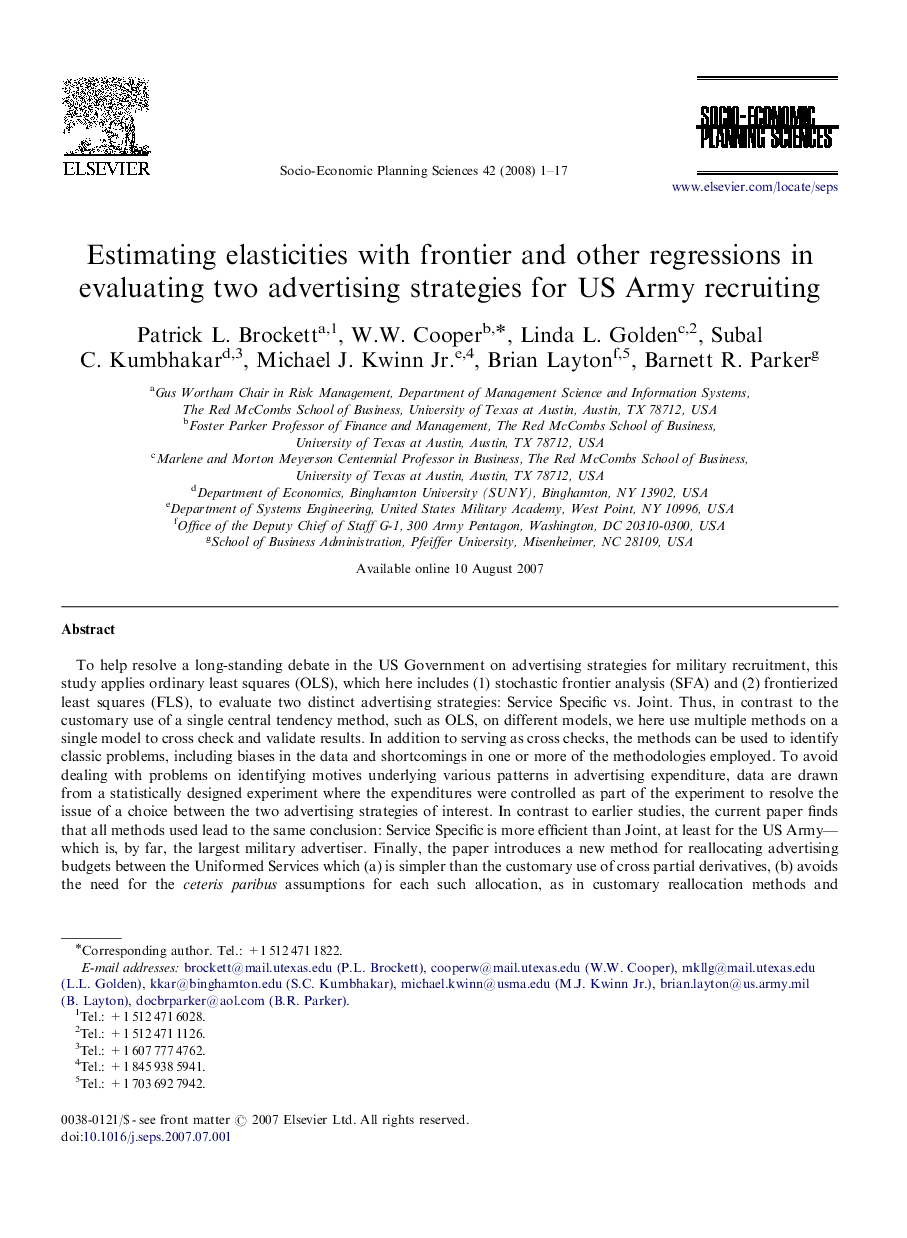| Article ID | Journal | Published Year | Pages | File Type |
|---|---|---|---|---|
| 987658 | Socio-Economic Planning Sciences | 2008 | 17 Pages |
To help resolve a long-standing debate in the US Government on advertising strategies for military recruitment, this study applies ordinary least squares (OLS), which here includes (1) stochastic frontier analysis (SFA) and (2) frontierized least squares (FLS), to evaluate two distinct advertising strategies: Service Specific vs. Joint. Thus, in contrast to the customary use of a single central tendency method, such as OLS, on different models, we here use multiple methods on a single model to cross check and validate results. In addition to serving as cross checks, the methods can be used to identify classic problems, including biases in the data and shortcomings in one or more of the methodologies employed. To avoid dealing with problems on identifying motives underlying various patterns in advertising expenditure, data are drawn from a statistically designed experiment where the expenditures were controlled as part of the experiment to resolve the issue of a choice between the two advertising strategies of interest. In contrast to earlier studies, the current paper finds that all methods used lead to the same conclusion: Service Specific is more efficient than Joint, at least for the US Army—which is, by far, the largest military advertiser. Finally, the paper introduces a new method for reallocating advertising budgets between the Uniformed Services which (a) is simpler than the customary use of cross partial derivatives, (b) avoids the need for the ceteris paribus assumptions for each such allocation, as in customary reallocation methods and (c) simplifies matters so that, for instance, it is not necessary to introduce an entirely new organization to administer the desired coordinating activities.
